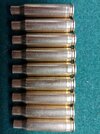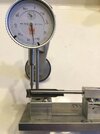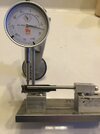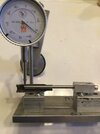p5200
Member
- Joined
- Jul 20, 2009
- Messages
- 308
I don't intend to imply it was a load issue, but a die chamber match issue. The extreme example would be my arasaka. The chamber is large at the base and the die works hard to restore it.The only rounds fired from the new gun are fine. The other rounds were fired from a like new Remington 700 SPS AAC model which I gave to my daughter in New York. I'll try sanding one down and see what it looks like. I always load mid way between min and max load data.
Testing is fun. Calipers work just fine for thisI've only got calipers. It won't take me long to fire a few more rounds and then resize them and check for ring. I'm still going to cut one open though.

That actually looks more like normal stretching. My .35 Remington brass will look like that. They might also have an internal issue, but maybe not. Kind of looks like both. I would check them.. These were clearly (IMO) showing the signs of case head separation. I did not do an internal check as I thought it wasn't necessary since I'd already decided to cull them. You
would the down spot be where the ring is?



